
NOTORNIS
Scope & Guideline
Exploring the intricacies of birdlife and ecology.
Introduction
Aims and Scopes
- Avian Ecology and Behavior:
Research on the ecological roles and behaviors of various bird species, including breeding habits, foraging strategies, and interactions within ecosystems. - Conservation Biology:
Studies aimed at understanding and mitigating the threats faced by bird populations, including habitat loss, predation, and the effects of climate change. - Population Dynamics:
Analysis of bird population trends and dynamics, often utilizing long-term data to assess changes in abundance and distribution. - Morphometrics and Physiology:
Investigations into the physical characteristics and physiological adaptations of birds, contributing to knowledge about their evolution and ecological niches. - Historical and Cultural Perspectives:
Exploration of the historical records and cultural significance of birds in New Zealand, including indigenous perspectives and historical accounts.
Trending and Emerging
- Impact of Climate Change:
There is an increasing focus on how climate change affects bird populations and their habitats, underscoring the urgency of understanding these impacts for effective conservation. - Conservation Genetics:
Emerging studies utilize genetic techniques to inform conservation strategies, particularly for endangered species, enhancing our understanding of population structure and genetic diversity. - Urban Ecology:
Research on how urban environments affect bird populations and behaviors is on the rise, reflecting the growing human impact on natural habitats. - Citizen Science Contributions:
The role of citizen science in avian research is gaining traction, highlighting the importance of public involvement in data collection and monitoring efforts. - Invasive Species Management:
Focused studies on the management and control of invasive species are becoming more prevalent, as these issues pose significant threats to native bird populations.
Declining or Waning
- Non-native Species Interactions:
Research related to the interactions between native birds and non-native species has decreased, possibly due to a shift towards more pressing conservation issues involving native species. - Museum Specimen Studies:
The use of historical museum specimens for contemporary studies has waned, as researchers increasingly prefer live observations and modern techniques such as genetic analysis. - Traditional Taxonomy:
Traditional taxonomic studies have seen a decrease, likely due to the rise of molecular techniques that provide more accurate classifications and insights into phylogenetic relationships.
Similar Journals

ORNITOLOGIA NEOTROPICAL
Exploring the rich tapestry of Neotropical birdlife.ORNITOLOGIA NEOTROPICAL is a vital journal dedicated to advancing the field of Neotropical ornithology, published by the esteemed Neotropical Ornithological Society in collaboration with the USGS Patuxent Wildlife Research Center. With an ISSN of 1075-4377, this journal serves as a platform for researchers, professionals, and students to disseminate important findings related to avian biodiversity, ecology, and conservation in the Neotropical region. Although currently classified in Q4 quartiles for both Animal Science and Zoology and Ecology, Evolution, Behavior and Systematics, ORNITOLOGIA NEOTROPICAL has been gaining recognition since its inception in 2005. The journal promotes open discussions and rigorous methodologies that significantly contribute to the understanding and protection of avian species. By facilitating accessibility to cutting-edge research and fostering a collaborative scientific community, ORNITOLOGIA NEOTROPICAL aims to enhance the impact and importance of ornithological studies in the Neotropical domain.
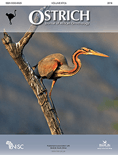
OSTRICH
Advancing Knowledge in Ecology and EvolutionOSTRICH, a distinguished journal published by Taylor & Francis Ltd, serves as a pivotal platform for disseminating research in the fields of ecology, evolution, behavior, and systematics. With an ISSN of 0030-6525 and an E-ISSN of 1727-947X, this journal has been contributing vital insights to the scientific community since its inception in 1930. Maintained in the UK, OSTRICH holds a respectable Q3 category ranking in the 2023 Ecology, Evolution, Behavior, and Systematics quartiles and ranks 408th out of 721 within its scientific domain according to Scopus, showcasing a competitive position within the 43rd percentile. OSTRICH is committed to publishing high-quality research that informs conservation efforts and biodiversity studies, making it an essential resource for researchers, professionals, and students interested in avian biology and related ecological fields. While not currently an open-access journal, OSTRICH offers varied access options through institutions and libraries, further widening its reach and impact within the scientific community. We invite academics and practitioners to explore its valuable articles that drive forward innovations in avian research.
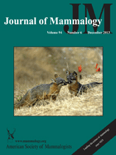
JOURNAL OF MAMMALOGY
Elevating Knowledge in Mammalian ResearchJournal of Mammalogy, published by Oxford University Press Inc, is a premier journal dedicated to the field of mammalogy, providing a key platform for researchers and professionals interested in the biology, ecology, and conservation of mammals. With a prestigious impact factor reflected in its Q1 ranking in Animal Science and Zoology, and multiple Q2 rankings in related categories such as Ecology and Genetics for 2023, this journal is recognized for its significant contribution to advancing knowledge in the discipline. The journal features rigorous peer-reviewed articles, ensuring high-quality research output valuable for students, academia, and conservation efforts alike. While not an open-access journal, it offers comprehensive subscription options for institutions and individual readers, promoting accessibility to critical findings in the realm of mammal research. Established in the earlier years of the 20th century, the Journal of Mammalogy has continuously evolved, serving as an integral resource for disseminating innovative studies and insights that drive the future of mammalian sciences.

ARDEA
Advancing avian knowledge through rigorous research.ARDEA, published by the Nederlandse Ornithologische Unie, is a prominent journal in the fields of Animal Science, Zoology, and Ecology. With its rich history spanning from 1981 to the present, ARDEA serves as a vital platform for researchers and professionals dedicated to avian studies and the ecological sciences. This quarterly journal is recognized in the Q3 category for both Animal Science and Ecology, as per the latest rankings, and maintains an impressive global standing within its subject areas. Although it operates without an open access model, the journal provides significant insights and contributions to the understanding of bird biology, conservation, and evolution. Researchers and students seeking to advance their knowledge in ornithology and related fields will find ARDEA to be an indispensable resource, promoting high-quality research and fostering academic collaboration.

NEW ZEALAND JOURNAL OF ECOLOGY
Bridging Theory and Practice in Ecological ResearchNEW ZEALAND JOURNAL OF ECOLOGY, published by the New Zealand Ecological Society, stands as a premier platform for disseminating research in the field of ecology, with a notable impact factor reflected in its Q2 ranking in multiple ecology categories for 2023. Established in 1980 and actively publishing since 1982, this journal provides a vital resource for ecologists and environmental scientists, fostering the exchange of innovative ideas and methodologies. The journal covers a wide range of ecological topics, ensuring a comprehensive overview of the current trends and research developments in both ecological theory and practical applications specific to New Zealand and beyond. Researchers, professionals, and students will find in this journal an authoritative source to advance their understanding of ecological dynamics and contribute to the growing field of ecological science. The journal is accessible to the community without open access, providing critical insights that underpin the ecological landscape of New Zealand and inform sustainable practices worldwide.

MARINE ORNITHOLOGY
Connecting Research and Conservation in Marine OrnithologyMarine Ornithology, published by the Pacific Seabird Group, is a vital resource in the field of animal science, zoology, and oceanography. With an ISSN of 1018-3337 and E-ISSN of 2074-1235, this journal has been a cornerstone for researchers and enthusiasts since its inception, actively contributing to the understanding of marine bird species and their ecosystems. Although it is currently not an open-access journal, it provides critical insights and findings that inform both academic research and practical conservation efforts. With its category quartiles positioned in Q3 for both Animal Science and Zoology, and Oceanography, Marine Ornithology occupies a significant, albeit competitive niche among scholarly publications. Researchers can benefit from its comprehensive coverage of marine avian studies, which is crucial for addressing the challenges these species face in changing oceanic environments. As the journal continues to evolve, with coverage from 1990 to 2024, it maintains an essential role in enriching our knowledge of marine biodiversity.
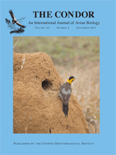
Ornithological Applications
Pioneering research that shapes the future of bird conservation.Ornithological Applications, published by Oxford University Press, is a premier academic journal dedicated to advancing the field of ornithology through innovative research and practical applications. With an impressive impact factor and recognized as a Q1 journal in both Animal Science and Zoology as well as Ecology, Evolution, Behavior and Systematics, it ranks among the top journals in its field, holding significance for researchers, professionals, and students alike. With a historical publication span from 1981 to the present, this journal has solidified its reputation for disseminating high-quality articles that explore avian biology, conservation, and management strategies. For those interested in open access publishing options, please check the title change details. As a vital resource, Ornithological Applications serves as a cornerstone for professionals looking to enhance their understanding of avian science and its critical applications in today's rapidly changing ecosystems.
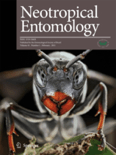
NEOTROPICAL ENTOMOLOGY
Advancing Insect Science in the TropicsNEOTROPICAL ENTOMOLOGY, published by the Entomological Society of Brazil, is a leading journal in the field of Insect Science, recognized for its significant contributions to the understanding of entomological research within the Neotropical region. With an impact factor placing it in the Q2 category and ranked #52 out of 181 in the Scopus rankings for Agricultural and Biological Sciences, this journal provides a vital platform for both seasoned researchers and emerging scholars to publish their innovative findings. Covering a broad scope of topics related to entomology, NEOTROPICAL ENTOMOLOGY aims to highlight the unique biodiversity and ecological significance of insects, fostering further appreciation and study within this crucial area of life sciences. The journal is available in both print (ISSN: 1519-566X) and online (E-ISSN: 1678-8052), ensuring accessibility to a wide audience and enhancing the dissemination of knowledge. As it converges towards its 2024 volume, the journal remains committed to advancing the scientific understanding of insect life in the tropics, making it an essential resource for researchers, professionals, and students alike.
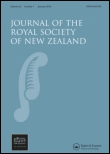
JOURNAL OF THE ROYAL SOCIETY OF NEW ZEALAND
Connecting Ideas, Inspiring DiscoveriesWelcome to the JOURNAL OF THE ROYAL SOCIETY OF NEW ZEALAND, a prestigious multidisciplinary publication hosted by Taylor & Francis Ltd. Since its inception in 1971, this journal has served as a vital platform for disseminating groundbreaking research across diverse fields, from the natural sciences to the humanities, contributing to its strong ranking within the top quartile (Q1) of multidisciplinary journals. With an impressive Scopus ranking of #28 out of 171 and an 83rd percentile placement, the journal is recognized for its high-quality contributions that advance knowledge and innovation. Though it currently does not offer Open Access options, its comprehensive scope and impactful publications make it an essential resource for researchers, professionals, and students alike, striving to push the boundaries of discovery and understanding. As we continue to progress through 2024, we invite you to engage with our diverse array of articles that reflect the vibrant research landscape of New Zealand and beyond.

MALIMBUS
Deepening understanding of bird species and their ecosystems.MALIMBUS is a peer-reviewed journal published by the West African Ornithological Society, focusing on the study of avian biology and conservation. It aims to disseminate important research findings that contribute to the understanding of bird species, their habitats, and the challenges they face across West Africa and beyond. Although currently not available in an open-access format, the journal is an invaluable resource for ornithologists, ecologists, and industry professionals keen on advancing their understanding of avian science. Those engaged in research on bird migration, breeding behaviors, and conservation strategies will find MALIMBUS to be a vital platform for sharing innovative ideas and fostering collaborations. With its commitment to quality and rigorous review processes, MALIMBUS is an essential reference for anyone dedicated to studying and preserving avian diversity.